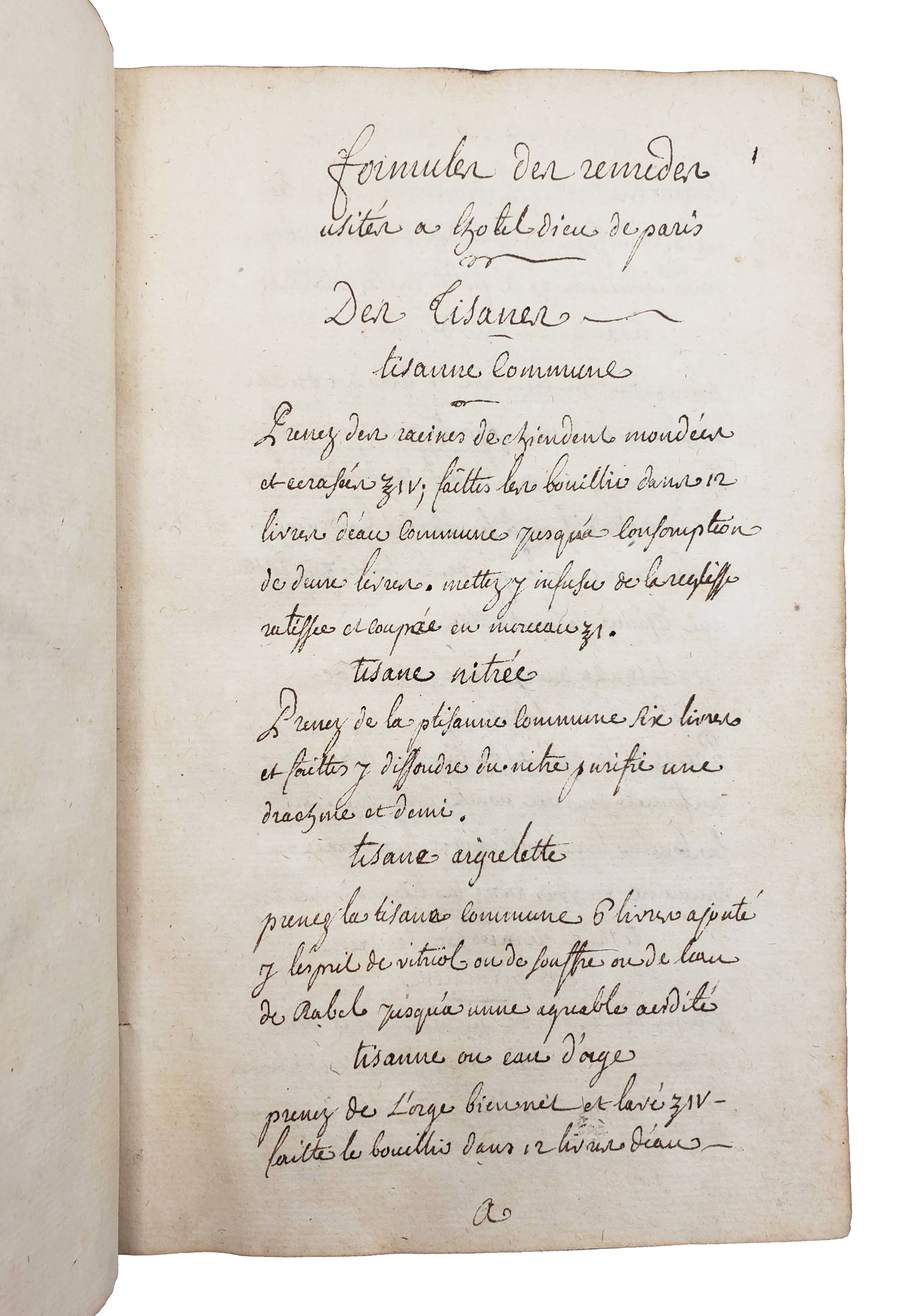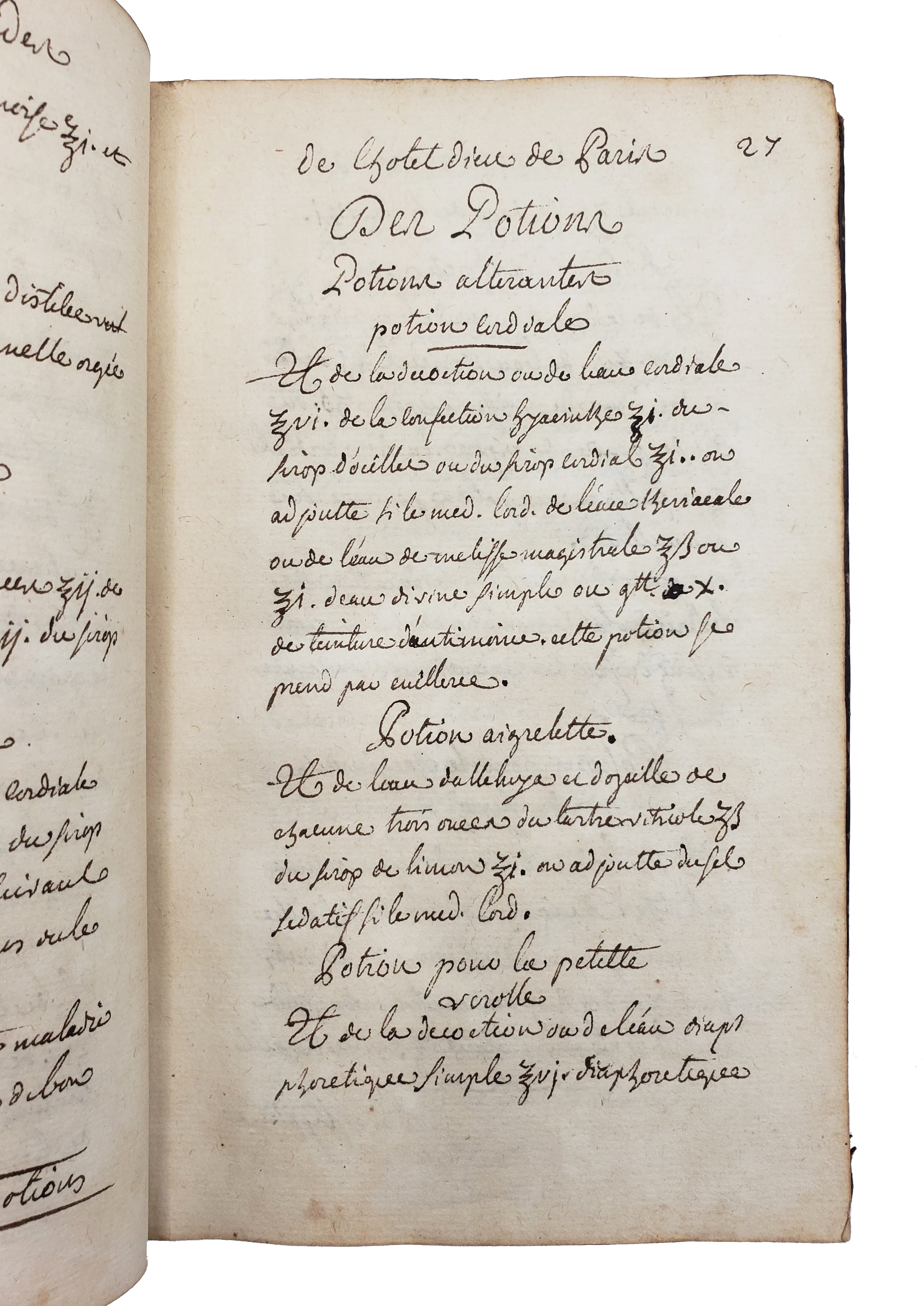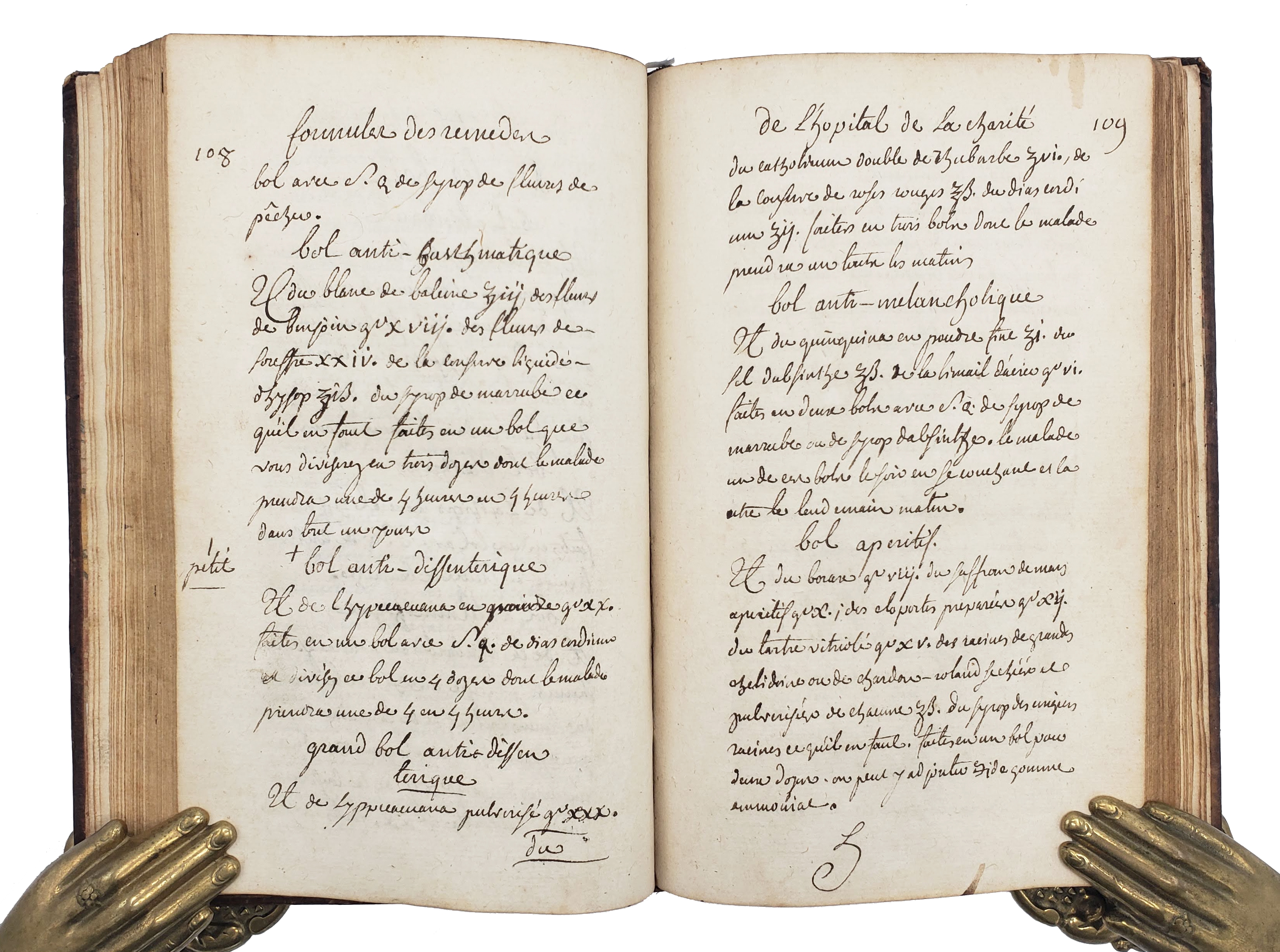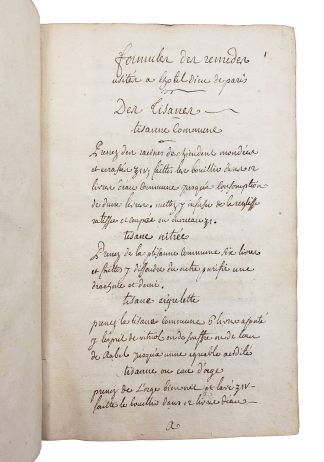RAUSSIN, L.J.
PHARMACOPOEIA OF THE PARISIAN HOSPITALS
Recuiell de formules des remedes utilises dans plusieurs Hopitaux de l’Hotel-Dieu.
France, Manuscript on paper, 1762.£5,950.00
8vo, 175 x 110mm. pp. [2], 1-230. Manuscript on paper, black cursive, approx. 22 lines per full page. Slight age browning, ink splash to title. A very good copy in contemporary French calf, single blind ruled, raised bands, spine gilt, marbled eps, corners bumped, head of spine scuffed, two circular stains to covers. Contemporary engraved armorial bookplate of Louis Jerôme Raussin, physician at Reims, and two typescript slips to front pastedown, contemporary ms recipe to ffep verso, and cont. Ms ‘Rue Scau St Denis St Honoré’ to fly, ms ‘N.1204’ to title, dry armorial stamp of rampant lion holding swords to couple of ll.
A very C18 ms pharmacopoeia comprising medical remedies used at the Hostel-Dieu hospitals in Paris. The author, Louis Jerôme Raussin (1721-98), was professor of medicine at Reims from 1747, and a collector of C17 and C18 medical theses. ‘An active spirit, and a very learned man, he gathered a variety of works and documents, annotated them and turned them into collection, never eventually printed’ (Ac.Nat., p.80). He was also involved in some of the earliest diatribes on inoculation, being opposed to it (Trav. Ac., p.246).
Based on the first printed pharmacopoeia of these hospitals – ‘Formules medicinales de l’Hostel-Dieu de Paris’ (1753) – this ms comprises dozens of remedies used at the civic hospitals in Paris. Established from the medieval period onwards, these institutions were managed by a ‘Bureau General’, composed of several city officials. In particular, Hôtel-Dieu, officially recognised in 1505, also included the C17 hospitals of St Louis, St Anne, and the Incurables. From 1560, the Hôtel-Dieu had a resident apothecary, who was at odds with the religious who had been running the hospital and who did not consider the apothecary a real medical practitioner. Until 1753, the recipes of their remedies, which requires the purchase of hundreds of pounds of ingredients, existed solely in ms. Among the dozens of remedies present in the three parts are herbal teas (e.g., linen seed, diuretic, astringent), decocts (e.g., histerique, vermifugue), purgatives, various ‘potions’, one against dysentery, syrups, medicinal broths (e.g., one made from vipers), wines, pills, and cataplasms, emulsions (e.g., to cause vomiting), and several ‘tintures’, in the Paracelsian manner. Each part is followed by a detailed table of contents, suggesting Raussin cherished this ms as a useful reference work. The last two ll. include a handful of recipes jotted down by Raussin. A very interesting work.
Académie Nationale de Reims, Séances et travaux (1894); Académie Nationale de Reims, Travaux de l\'Académie nationale de Reims, vols 41-2 (1866); J. Cheymol, ‘Le passé de la pharmacie hospitalière à Paris’, Revue d\'Histoire de la Pharmacie, 218 (1973), pp.471-91




